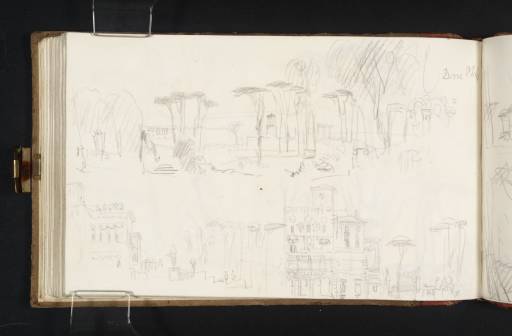References
How to cite
Nicola Moorby, ‘Three Sketches of the Grounds and Casino Nobile of the Villa Borghese, Rome 1819 by Joseph Mallord William Turner’, catalogue entry, January 2009, in David Blayney Brown (ed.), J.M.W. Turner: Sketchbooks, Drawings and Watercolours, Tate Research Publication, December 2012, https://www

